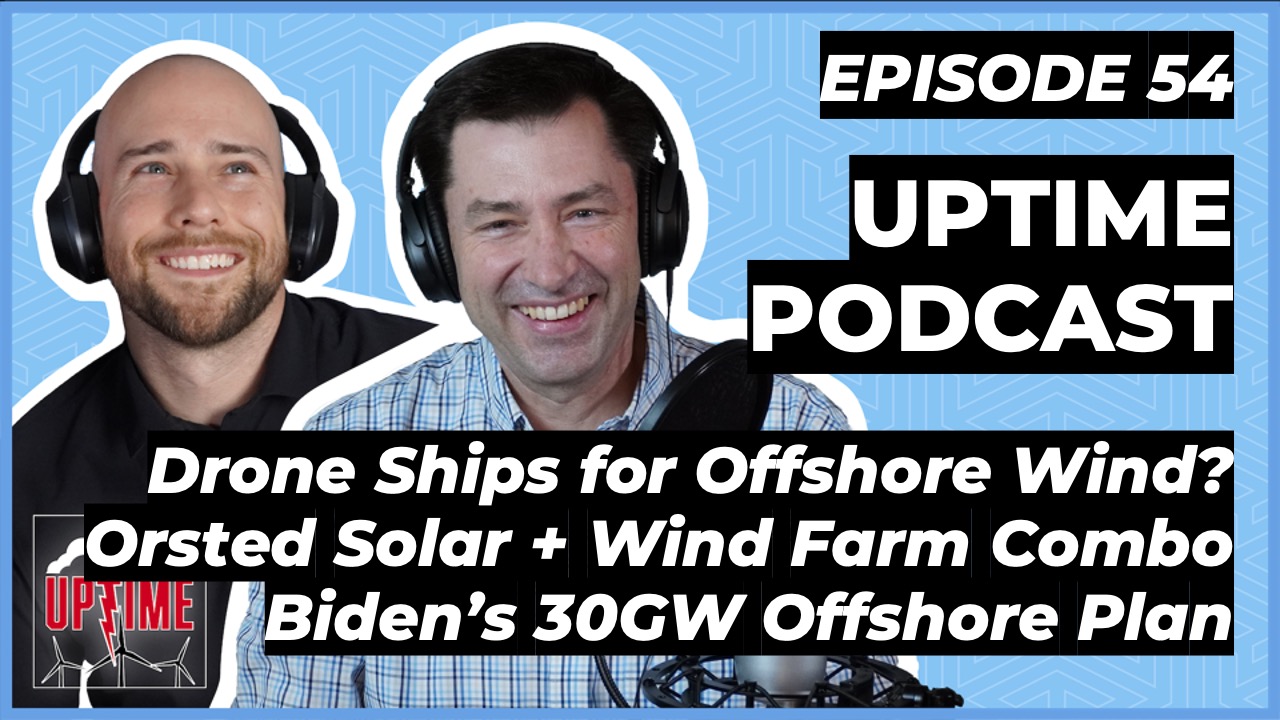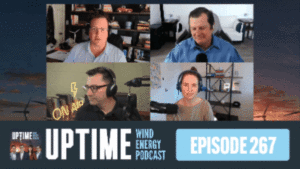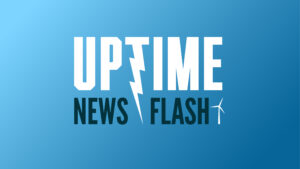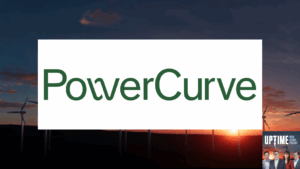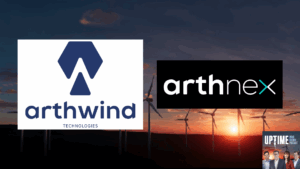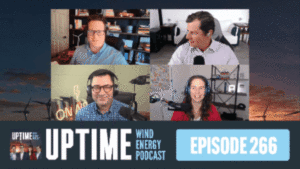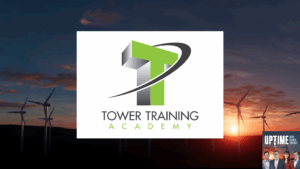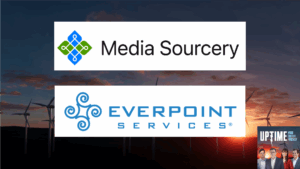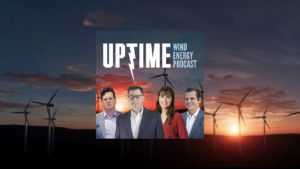In this episode, we discuss Orsted’s new 518MW wind farm plans, the Biden administration’s proposal to put 30GW of wind energy in the ocean off of New Jersey, a Chinese company’s plans to connect floating wind turbines with seabed offshore turbines, plus offshore inspection drones in both seagoing and aircraft versions.
Podcast: Play in new window | Download
This episode is sponsored by Weather Guard Lightning tech. Learn more about Weather Guard’s StrikeTape Wind Turbine LPS retrofit. Follow the show on Facebook, YouTube, Twitter, Linkedin and visit Weather Guard on the web. Have a question we can answer on the show? Email us!
Transcript – EP54: Orsted’s Wind and Solar Plans; Biden Administration Pledges 30GW plus Autonomous Offshore Inspection Drones?
this episode is brought to you by weather guard lightning tech at weather guard we make wind turbine lightning protection easy if you’re a wind farm operator stop settling for damaged turbine blades and constant downtime get your uptime back with our strike tape lightning protection system learn more in today’s show notes or visit weatherguardwind.com striketape
welcome back i’m Allen Hall. I’m Dan Blewett and this is the uptime podcast where we talk about wind energy engineering lightning protection and ways to keep your wind turbines running
all right welcome back to the uptime podcast i’m your co-host Dan Blewett on today’s show we’re going to talk about a new new plans for a GE uh wind turbine blade manufacturing plant we’re going to talk about the bite administration and their plans they’ve got some ambitious ideas to get 30 gigawatts of power into offshore wind by 2030. talk about a uh orsted project that’s really interesting it’s a hybrid 518 megawatt project that’s combining wind turbines and solar some interesting technology being used in china connecting a fixed bottom offshore wind turbine with a floating wind turbine of course they’re also installing their first one their first floating turbine there and lastly we’ll talk about some interesting technology about drone swarms both by land or i’m sorry by sea and by air so Allen first how are you sir great dan how are you i’m doing well a lot of travel last week but we’re back it’s exciting um we’ve got ge offshore uh well not offshore but uh they’re creating a new plant for lm wind power to manufacture their 107 meter long blades for the halle 8x course 107 meters is second best now because they have 108 meter blades you know it seems mesa and of course vestas it’s it’s so funny they’re all just going to add like six inches to each blade but um this is up in t side which is uh that’s pretty close to scotland isn’t it alan it’s way up north in england on the sort of the north sea coast on the on the eastern coast of northern england yeah which is getting to be the norm lately dan is that as these wind turbines get bigger and bigger and bigger and require uh ships to move them around and offshore obviously offshore is going to be the biggest growing marketplace then a lot of facilities that are located near the shoreline are going to be big opportunities a lot of towns that may not have seen that sort of industry in a while uh in terms of large industrial growth industries like that like wind turbines will be are going to see a boon right it’s going to employ hundreds or thousands of people uh to make wind turbine blades that big and to get them on ships and to get them where they got to go that takes a seaport town so it’s it’s is fascinating that we’re seeing um this sort of sort of growth along the shorelines that we hadn’t seen in a long time yeah don’t you think it’s gonna be a big big business there right along the coastline yeah i mean you could by i mean potentially in the future see whole towns i mean be built around these industries just like ship building yards you know i mean with uh you know we’re gonna talk about the buying administration trying to put you know 30 gigawatts of offshore wind in the us and the new jersey area you know as you know renewable energy jobs grow some of those remote towns are going to have to proliferate because you’re not going to get good workers there if it’s just this little tiny cow town where there’s nothing to do very remote no one wants to work there they’re going to i’m sure put a lot of incentives in to say hey build this small town up because we’re gonna have a lot of factory jobs here and a lot of good stable jobs for the future producing these blades and uh we need a good main street like we need you know people to be happy here right so i think they’ll be important belfast had done that a couple years ago because belfast was a huge shipping manufacturer or a ship manufacturer forever right that’s where the titanic was built was in belfast and all the accompanying sister ships were built in belfast so they have all the docs and infrastructure to build ships and uh when the when the wind turbine industry picked up this is years ago uh they’re using the docks to to move and transport wind turbines because they’re right there they could load up so it kind of revitalized an industry had been gone for a number of years and i think that’s what’s going to happen is a lot of those old existing seaports and ship manufacturing sites going to be retrofitted into wind turbine blade manufacturing wind turbine manufacturing sites which is great if that’s great news right so just like uh spacex of the day i think it was yesterday or elon musk was putting out uh tweets saying hey come down to brownsville texas have you ever been down that way it’s not the most populous place in the world but he was throwing like 20 million dollars into this little tiny town to get people to move there because they’re going to grow their business there which is what’s going to happen in the wind turbine side they’re going to grow a business in these smaller towns and it’s going to make these little towns explode at least temporarily so get it while you can i think these little these smaller communities are going to take advantage of it yeah it’s funny you brought that out because that just popping into my head because i saw that yesterday as well which i’m not as big an elon musk follower as you are but interesting that you neither of us talked about that for those of you listening neither alan or i talked about that elon musk tweet but it’s funny that we both contextually grabbed that for this purpose because that is interesting and of course it’s so sad i looked at some of the comments of elon’s tweet and people like oh this is 0.0001 percent of his net worth this isn’t even this is like me donating a hundred dollars like people just be ha like do do we need to be angry about everything like he’s donating 20 million to a small town to revitalize downtown that would make a very meaningful thing it’s like sorry he didn’t donate to homelessness or well there’s lots of great causes that could use that money for for sure but it’s like look this is this is money going to help some people like why do you need to be angry about everything i don’t know it’s going to employ thousands of people there yeah it was one of the tweets i pretty sure i saw which was we’re going to employ thousands of people down and essentially the tip of texas we need to have a community that can support it i’m going to put 10 20 million dollars in the local community to to get it up and running where it can support thousands of people and all the new homes that would be built and all the new businesses that will pop up and all the new restaurants that’ll that will occur so that say 10 million dollars is going to really turn into roughly 100 million dollars worth of investment so it’s just think of that as starter funds and it’s going to employ a bunch of people which is great good that’s what it should do yeah well and you know this goes back to the conversation we have with bjorn hedges uh who’s the um you know one site manager up in uh in washington state uh and he was talking about like you know hey if you if you’re a person that wants to work in wind you need to be a person that’s okay living in that sort of more country kind of life like you’re okay being in a little more vote remote remote area and of course that won’t be everybody so the more you can make that town have a combination of things where people could say oh i can have some nightlife or i can have some you know whatever it is that you know people want um it’s never gonna be a big city life i’m sure but just to make it more balanced right now you can grab maybe like 10 more people want to do that job that’s going to be it’s going to be important because i wouldn’t sure want to personally live in a 5 000 person town in the middle of nowhere like that’s just like not where i’m at even if it was a great opportunity it’s like sorry doesn’t fit my lifestyle more like a city person so they need to you know find a way to get to millennials but it is it is advantageous if you’re an employee in those situations you’re going to be in a relatively lower cost part of the country in northern england is relatively lower cost but you’re still getting paid higher wages so you’re kind of on you’re you’re so the lack of access to a big downtown or community like london would be you’re making extra cash and that that has a benefit too and that’s why they’ll be able to draw the sort of talent they’re gonna draw there is because it’s a premium you have this bonus premium because of the the economic conditions you’re at an advantage there which is if you’re an employee boy it’s hard to pass that up right now yeah for sure so moving on the bidet administration has uh pledged to create 30 gigawatts of offshore wind power by 2030 they say this is going to employ directly about 44 000 people over time and they’re excited about it obviously you know the renewable energy is more of a democratic push um and of course we’re not you know on either side of the political spectrum here on the on this podcast but i know obviously democratic folk are be real excited about this anyone in the wind industry and who you know really cares about the planet is gonna be excited about this but alan does this seem like a target that they’re gonna be able to to reach in just a decade that seems like a pretty large project off the coast of you know new york new jersey yeah it is a large project and when hit with things coming out of the white house like this basically a proposal to come out of the white house they’re not doing any of the heavy lifting and and all those situations you if you if you if you were to mark down all the proposals coming out of the white house i don’t care republican or democrat doesn’t doesn’t really matter uh and then follow up with them and have actually come to reality it’s very few what drives those projects are the states and if if they can leverage the experience of knowledgeable companies that know how to do that get them in the state get some employment up get those running sure what the federal government can do is essentially open up the space that’s that that’s what they can do basically relax or remove some of the barriers that will exist some of the red tape bureaucracy stuff that will exist to creating this that’s where the federal government can come in maybe on some funding side tax breaks whatnot but i think a lot of the heavy lifting is done at the state level and that’s where you see at least in the united states you see a number of states that have large wind turbine industries is because the states have made it possible they’ve leveraged the federal government to come in and help them then obviously that does aid it but it really depend upon whether new york delaware pennsylvania all those states along the coastline are willing to play ball because if they’re not willing to play ball it’ll never happen so that i think i think this is an interesting take on it in terms of the administration sort of proposing it i haven’t heard a lot from the states saying yeah we’re going to do it yet that’s what i’m waiting for and of course we we reported uh on the alliance between maryland north carolina and a couple other uh northeastern states recently so it seems like this is already something that people were thinking about and hoping to do and now it seems like if you got the thumbs up from you know the white house then like you said it’s just gonna remove some barriers and make it easier where people are like hey maybe this isn’t as risky as it was because you know we start to put all these gears in motion and now it just sort of gets stopped you know at the uh at the white house level but now it seems like there’s not gonna be any barriers at least so if states really want to pursue it then they should be like okay hey this could potentially be viable and we’ve you know everyone’s on the same page so that seems like a like a good way to go but we should be holding the white house accountable in this sense when they make proposals like this which are 10 years out and
the president is in office for four years maybe a maximum of eight and you’ve got a ten year proposal you’re not going to be around when people will be held accountable if it did or didn’t happen if they really if they’re really on the ball and want to make something good happen then say it’s going to be done in four years or set a lower bar and get it done in four years i think those are remarkable checkpoints that if you really want to get some initiative behind it then that’s what you’ll do you know it’s sort of like the john kennedy we’re gonna send a man to the moon and back by the end of the decade well that was set in 62 and he died in 63 and they finished it july of 69 or august of 69. um so you know kennedy even if kennedy was alive he still wasn’t going to see if that was going to come to fruition or not i think his death probably propelled it more than anything else but the white house and the administration really ought to tighten up those goals we can do a lot in four years you’d be surprised industry is ready to go we are ready to have offshore wind we can do with this in two years if we really wanted to yeah once and speaking of which so orsted has committed to a 518 megawatt uh really big wind farm in in texas and so like they’ve essentially haven’t it doesn’t seem like they’ve started construction yet but they expect to be operational in the first half of 2022 so like you said of course offshore is much more complex right it is yeah and like the like you said the systems and permitting all that stuff is probably not as quick in a state where there’s not nearly as much wind power as in texas where they like they’ve been doing this um for quite a while now yeah so uh this is a really interesting project though that they’re combining um solar and wind i’m sure just like the topography and the the geographic location just fits that really well they’re also replanting a lot of like native grasses underneath the solar panels so it seems like they’re trying to do as much environmentally as they can because i know that’s a common um you know complaint about solar is that it just takes up all this space this huge footprint on the ground and then it’s like what happens to the wildlife there you know etc etc so it sounds like they’re doing a good job to hopefully pump some um you know vegetative growth back into that area right well they’re trying to maximize the usefulness of the of the land that they have and i think that’s that’s smart if you’re going to do uh wind or solar you want to maximize the amount of energy you can get out of it if you’re going to do it do it and do the don’t and like in a lot of places in in my state uh like a wind turbine sites they tend to be smaller 10 12 turbines in a spot or one turbine at a spot if you’re going to go through the process of trying to gather wind industry you need to do it to some reasonable level and i think you know orstad has been around long enough to know how to maximize the energy out of a useful space so this this makes a lot more sense in some of the smaller projects we hear about on the east coast of the united states it really does yeah and i’ll be curious to see how this is laid out when it comes to fruition i haven’t seen the plans but you know where the solar panel is going to be really kind of butted up towards the bottom like how how intermingled are the two things i’d be really curious to see that because as i was flying home from uh phoenix yesterday so seeing some of these wind turbines as i was you know flying in and making my descent into into dc it um it just you could see like there was all this extra area you know not not necessarily excavated but just cleared around it and if these are on the top of you know little little crest i wouldn’t say like a mountain range because i don’t know there’s really legit mountains in west virginia but you know there’s at this very it had to be a pretty sunny location relatively speaking right not obviously not as like as sunny as perhaps texas but um yeah you wonder if you could just like sprinkle you know sprinkle some uh solar panels underneath them just like you would mulch almost that’s kind of how i i wonder if this would be like solar panels could be it’s kind of like mulch where they’re just lining all the extra unused space obviously within reason because you said potentially have a crane come in and you know do all the maintenance and repair and all that stuff but sure it’d be interesting to see how they could um just like what they do with the offshore or that they’re trying to do with the offshore turbines which is make them multi-purpose right they’re trying to have aquaculture labs and all these different things and stuff attached to them you know maybe solar can really coexist and intermingle because it’s a very well proven technology i hope so we need to do more of it so moving on uh speaking of offshore there’s a chinese project with so orient cable has won a contract this is reporting from offshorewind.biz that they’re going to connect a fixed bottom offshore wind turbine with a floating one and alan what is the purpose of connecting these two utilizing more energy in a certain fixed space right you have an anchor you have an anchor spot and so you can leverage that anchor spot to then put floating turbines which are going to be the all the rave here in the next couple of years hook some floating turbines to this anchor turbine and sort of keep them in place it may make the whole installation simpler if they can make it work uh the the the trick is you know how how to coordinate everything mechanically so you have this organized system that’s gathering power it’s a little more complicated than than they make it seem but uh we’re going to see a lot of innovation like this where we’re going to leverage what we know and what we have existing with new technology and i think that’s the way a lot of technologies work is that you start from where you know and you kind of grow it incrementally to something that’s uh more complicated or takes more infrastructure or takes more engineering know-how to do those little small steps that happen in engineering we always forget about are super important to get to the final goal and it seems like this project is set up to do that right it’s sort of that incremental approach let’s take this next step and the next step in the next step this is just one of many that are going to happen over the next five years or so uh to expand offshore wind turbines and i think that well as we saw in south korea they’re making a huge push uh in offshore wind to grow the industry one they have a huge shipping uh manufacturing shipping industry and obviously you have a lot of shoreline so in even in south korea they’re all headed that way you’re going to see china do it you’re going to see united states steward you’re going to see europe do it spain’s already doing it games is already doing it indio will do it it’s just going to be a natural outgrowth of we’re going to have a lot more wind turbines offshore we will yeah well it’s funny even you know we’ve hit the this is episode 54 so we’ve hit the year mark on this podcast i think i feel like we started in april but i guess we didn’t because we really haven’t done like two releases in a week maybe we did maybe around christmas or something i think it was a special episode but you know we’ve hit the year mark on this podcast and i just remember back when we initially started there wasn’t a lot of reporting on floating wind turbines there wasn’t like a new one coming out every week and now there’s kind of like a new announcement about a floating wind wind farm or even just a new test a new prototype there’s there’s been a lot of changes in just in the last 12 months and i find that that really interesting and it seems just like everyone’s like hey this is kind of good to go is what it seems like that everyone’s gotten a lot more on board with it that they’re more comfortable with the technology that it’s maybe coming more financially feasible which in a year’s time that seems kind of crazy it is and it one it is crazy because how fast it has evolved but this the the consequence of all that as as the turbines have gotten larger the number of companies that can compete in that space have gotten a little bit smaller you have to have a lot of cash to create offshore wind turbines when you’re talking about six 10 12 15 megawatt machines there’s only a certain number of industries in the wor or companies in the world that can broach that subject realistically uh so yeah we have and we’ve seen a sort of a push from land-based wind turbines to offshore clearly we have uh so you’re going to continue to see that sort of uh large-scale industry companies the siemens gamesas the ge’s continue to push in those spaces because they just have the revenated revenue to create and work in that space and unless you do it’s gonna be really hard to participate in that yeah one our last story today so this is reporting from offshore engineer that there’s a us-based company um working with the university of portsmouth so the company’s called ocean infiniti and they’re basically putting together a fleet of unmanned um you know vessels so these little robot ships will you know be deployed sent out to the offshore wind turbines and then on those ships would have flying drones and they’ll have their drones take off and this is also crazy that i mean none of it’s unexpected right like the battery technology the drone technology the autonomous vehicle technology all this stuff is just really coming together so this seems pretty realistic that hey send out the drone ship with the drone on it and you know we talked to uh last year with uh the ceo of sky specs he talked about how it’s just like one click at least on their models that just like one click and the drone is programmed to to fly its path and to scan the blade and to do its inspections automatically i mean it was it was always going this way right but i mean what what what’s your take on what ocean vanity is doing and how far do you feel like this is out from being realistically in the field well i think an interesting accident happened over the last week which is going to propel this further so when the the cargo ship uh from evergreen got stuck in the suez canal i was thinking about that too we have like a weird thing going on right now in our brains that was a fascinating a fascinating development sorry continue right but wouldn’t that say to you that a human piloted ship of that size uh may not be the end-all be-all obviously they put hundreds of ships through their thousands of ships per month or their they must a month right they must but it only takes one to go wrong where you know all of a sudden you don’t have uh shipping across a particular portion of the world the drone ship thing is going to start to play into it even more right in in the sense of there probably will be a human still somewhere around but if they could have controlled that ship from the if the canal could have controlled that ship’s progress through the canal and had sensed it it was having problems shut it down before it got wasted into the wall of the canal they would have done it and and i think uh if a company that’s invested in that area is smart they’re going to start leveraging those accidents into pushing for more autonomous
water water-based craft and then obviously that’s gonna also fulfill a second step which is the autonomous drones to go off and do inspections because in as we get to these larger offshore wind turbines the problem is going to be they’re going to be so massive how are you going to inspect them and continually inspect them to make sure they don’t have any significant problems because you’re going to rely on a turbine more and more and more now we rely on hundreds of turbines or dozens of turbines any one time but because the scale is going to get bigger and we’re going to get more reliant on them you really can’t have one go down that that’s what’s going to drive having a a swarm quote quotes a swarm of drones inspecting these turbines you’re going to have to have that to keep them operational so it’s just again that evolution of how fast can you drive it till you get to a point where you are constantly knowing that the wind turbine is in good operational shape and can continue working or can you flag that problem early i don’t know how you do it one drone at a time i think it’s going to be hard to do that because if there’s a scale this the scale of wind turbines offshore is going to be explosive and how are you going to manage it yeah one and you wonder if at some point like say you have a huge wind farm of like a hundred you know offshore turbines if they then also just install a huge like helipad in the center that has some accommodations in it where you know we’ve talked about this before right maybe the evtol these electric vertical takeoff landing you know electric helicopters essentially they’ve got a place to land brings a couple crew they’re gonna be there a couple days on this little rig they’ve got a port for a bunch of these unmanned vessels and all right guys we’re gonna be here for a week and they do their thing from this sort of hub and then go back out with all this electronic or this electric uh vehicle technology that’s growing it’s i think it could be really hard to predict what will be the best solution because those evtols might be great to just bring out a crew and the equipment’s already there or whatever and they go there fly their drones and do it from that they might not need to send 10 boats out like you never know or they might go there right you know be the the director or the maestro of the little orchestra of boats that goes out but uh it’ll be really interesting just to see which of these get started and actually start doing the work and then get going just like we’ve talked about with robots up on winter and blades right there’s arounds there’s rope robotics which we’re going to be talking to them in an upcoming episode there’s a bunch of robotics companies also refining their technology and theirs are going to evolve and pivot right and uh some will some will fade away and fail and others will become the the chosen one the golden child so it’s really interesting to see all the technology evolving winners and losers as they as they do yeah you’re going to see a significant amount of effort applied in that space in the next year or two all right we’re going to wrap up today’s episode of uptime if you’re new to the show welcome if you’re a regular here thank you for your continued support please subscribe to the show and leave a review on itunes spotify or wherever you listen to podcasts don’t forget to check out the weatherguard lightning tech youtube channel for video episodes full interviews and short clips from each show for alan and all of us at weatherguard stay safe and we’ll see you next week



